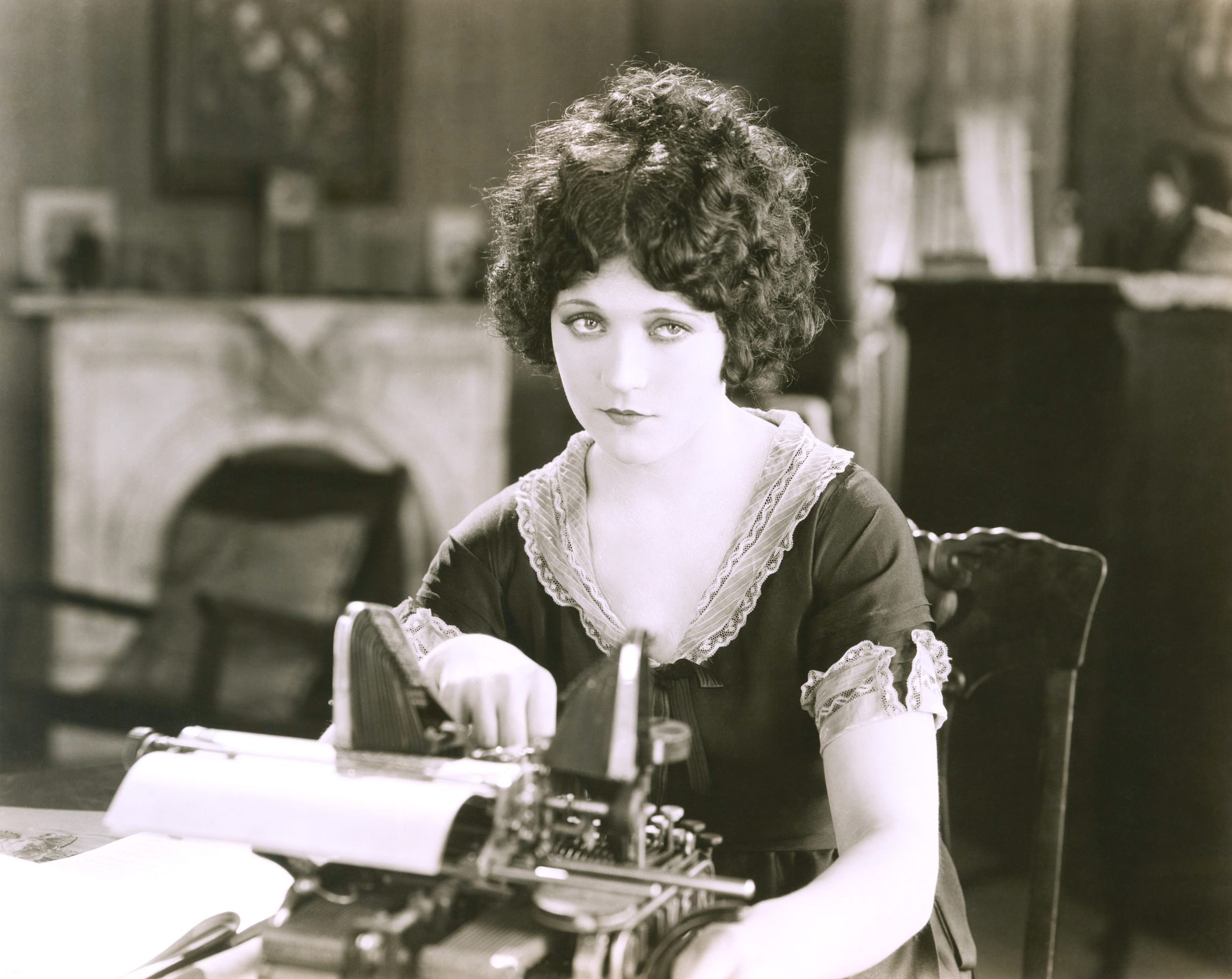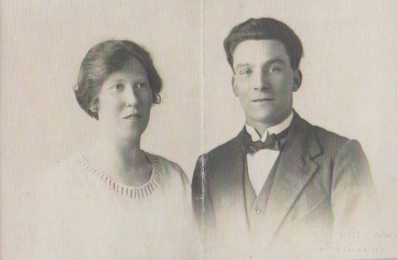Recently while reviewing a document I had written, Microsoft Word admonished me with the warning ‘only one space between words is better’. Oh no, I thought, not you too. The issue had come up in an office I worked in a few years earlier, with younger members of the team happy to inform me what I was doing wrong. The world it would seem had changed as the typewriter gave way to the computer. Type ‘one space or two after a full stop’ into a search engine and you will see the debate that is raging.

I learned to type in high school, in the 1980’s on a manual typewriter. I can still remember the click clack hammering sound of the keys being struck, the sound of the carriage return lever being hit when I needed to start a new line, the bell as the roller returned to the left hand margin and the sound of the roller as it turned moving the paper up out of the machine. Electric typewriters came along not long afterwards (although my first exams were taken on manual typewriters) and computers came fast on their heels.
History
In the 1860s, Christopher Latham Sholes, an amateur inventor in Milwaukee invented the first typewriter, which he developed with Samuel Soulé, James Densmore and Carlos Glidden and first patented in 1868. Resembling a piano, it was originally built with an alphabetical arrangement of 28 keys, so everyone would know where to find them. In 1878 US Patent Number 207,559 marked the first documented appearance of the QWERTY layout and a deal with gun maker Remington, proved to be a huge success.

By 1890, there were more than 100,000 QWERTY based Remington produced typewriters in use across the country and in 1893 when the five largest typewriter manufacturers – Remington, Caligraph, Yost, Densmore and Smith-Premier merged to form the Union Typewriter Company, they agreed to adopt QWERTY as the design we know today. However, the monospace type of a manual typewriter did not create a sufficient visual space between the end of one sentence and the beginning of the next, so users needed to use two spaces in order that sentences did not run into one another. Today with proportional fonts, only one space is necessary to create the necessary separation but for those of us who had it drilled into us that two spaces should always be used after a full stop, it a hard habit to break.

A learned skill
If you wanted to work in an office, typewriting was a skill that had to be learned and for which exams were sat and qualifications achieved. Typewriters were complex pieces of machinery as can be seen in the illustration below. The strange unfamiliar arrangement of the keys was the first of many things I had to learn before I could begin typing, such as how to insert a sheet of paper, how to wind the roller to bring the paper in and out of the machine, how to adjust the paper if it wasn’t straight and how to hold the paper in place with a ruled metal bar which was also used for setting margins and tabs.

Diagram showing Remington typewriter parts.
As my training progressed, I learned to touch type by typing the same letters over and over, for example asdsd, fadsf, dfsaf, so I would learn where the keys were without looking, before progressing to ‘the quick brown fox jumped over the lazy dog’. I was taught how to layout letters correctly, sometimes with full punctuation (that is using commas within dates and addresses); how to type envelopes and labels and I learned that the word ‘stet’ next to words that had been crossed through or changed, meant the writer wanted me to ignore the alteration – the word means ‘let it stand’. If my letter was to have an enclosure, the letters Enc needed to be added to the bottom of the letter.

Example of a letter using full punctuation.
Then there was carbon paper, thin paper coated with ink which was used for making duplicate copies of a document. So for example you may be asked to produce a letter with two carbon copies, say an office copy and a copy for another recipient and would have to construct a sandwich made of paper and carbon paper which then needed to be fed into the typewriter. Copy letters needed to have the letters CC and the name of the recipient inserted at the end of the letter, so that everyone could see who received a copy of that letter. However, if you wanted copies of a letter to be sent without everyone knowing who had received it, you had to instead handwrite the letters BCC, which stood for blind carbon copy, along with the name of the recipient on the copy letter only (and also remember to put the right letter in the right envelope). Speed tests were undertaken too, as typing exams were timed, so you needed to be able to produce your work in the allocated time when you came to sit your exam. I remember feeling terrifically proud of mine, which were signed by my typing teacher and my headmaster.
 Speed test certificate.
Speed test certificate.
There was one font size and font style but no way to emphasise text in bold or italics. The typewriter ribbon, black on the top half, red on the bottom half, allowed the typist to type in one of the two colours, depending on how the machine was set. The ribbon also needed to be changed regularly by reaching into the top of the machine, removing the ribbon spool and replacing it with a new one. Underlining if required was done by repeatedly hitting the underline key the length and distance of the text that needed underlining. Tables were created in a similar manner and rows and columns of figures had to be lined up correctly and evenly spaced. It was slow, methodical, detailed work and any mistakes had to be corrected manually, using a typewriter pencil, tippex liquid or tippex paper. However, presentation was of the utmost importance, so if errors could not be corrected neatly, you would need to start over with your document.
 Example of an instruction to type a letter.
Example of an instruction to type a letter.
Examinations
I remember undertaking many practice papers in preparation for my exams and anxiously waiting my results. RSA and Pitman were the typewriting qualification boards and they had strict rules that needed to be adhered to if you wanted to pass your exams, meaning that attention to detail was a must. Two spaces after a full stop or a colon and one after a comma or semi colon were essential and you lost marks if you failed to do this.
RSA exams were timed and assessed in three areas – production (completing the work in the given time), accuracy and presentation. Failing in one area meant you failed the whole exam. Candidates could achieve RSA qualifications at three levels – elementary level (RSA one), intermediate level (RSA two) and advanced level (RSA three).

Instruction to type a letter.
Today I am the proud holder of RSA qualifications at levels one, two and three, an RSA elementary qualification in audio typing, Pitman advanced and elementary qualifications, along with Computer Literacy and Information Technology (CLAIT) and European Computer Driving Licence (ECDL) qualifications. Then I learned how to create and update websites too, which I have now done for over 15 years. And I feel proud, not only for me but for those who went before me, doing it the hard way, learning their craft before computers ruled the world and then, as we entered the digital age, learning new skills and ways of doing things.
So, if you feel annoyed when seeing two spaces after a full stop, just for a moment consider how important it actually is. And remember, there was a time when two spaces were the standard and the only way to do things. Typing wasn’t always as easy as it is today. And finally, you never know what changes may happen in your own lifetime, so maybe take a moment to think before you dismiss someone’s way of doing things out of hand. Be kind to those who may do things differently to you, as one day, you may find yourself in their shoes.
Note
Microsoft Word now enables users to change document spacing. If like me you find two spaces a hard habit to break but need to work to a house style, select editor on your toolbar, then ‘punctuation conventions’ and ‘one space’. Further information can also be found in help by typing ‘change the spacing between text.’
Sources
Further information

 Wellington Bombers flying in formation.
Wellington Bombers flying in formation.







 Speed test certificate.
Speed test certificate. Example of an instruction to type a letter.
Example of an instruction to type a letter.






